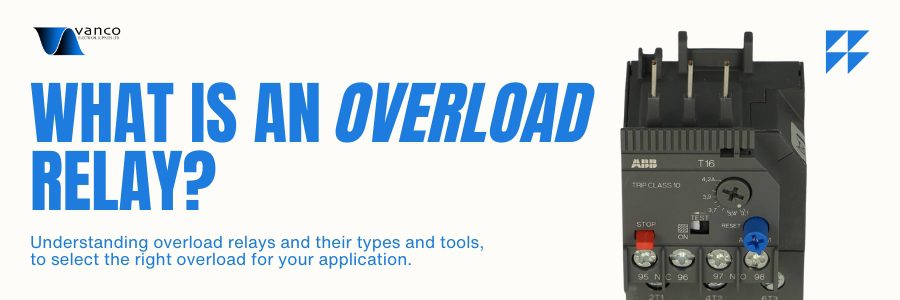Overload Protection
Overload protection is crucial to prevent motors from drawing excess current, which can cause overheating and damage. Overload relays protect the motor and its components by monitoring the current. If the current exceeds a set limit for a certain duration, the relay trips, interrupting the motor control circuit and cutting power to prevent overheating. Relays can be manually or automatically reset.
How an Overload Relay Works
Overload relays are wired in series with the motor, ensuring that all motor current flows through them. When excess current is detected, the relay trips, breaking the circuit and stopping the motor. After identifying and fixing the overload cause, the relay can be reset to restart the motor.
Types of Overload Relays
- Thermal Overload Relays: These are the most common and economical option. They rely on a bimetallic strip, a clever component made of two bonded metals with different rates of expansion when heated. As current flows through the relay’s heater element, it warms up the bimetallic strip. The uneven expansion causes the strip to bend, eventually tripping a switch that cuts power to the motor.
- Electronic Overload Relays: These are the most sophisticated and feature-rich option. They employ electronic circuitry to monitor current flow precisely. They can be adjusted to account for factors like motor starting current and ambient temperature. Additionally, they offer real-time data on motor operation, allowing for preventive maintenance.
Overload Relay Tripping
Tripping time decreases as current increases, defined by the inverse time curve and trip class. Common trip classes (5, 10, 20, 30) indicate the seconds it takes to trip at 720% full load current. Class 5 is for fast tripping motors, Class 10 for low thermal capacity motors, Class 20 for general purposes, and Class 30 for high inertia loads to avoid nuisance tripping.
At Vanco Electrical Supplies, we offer a wide range of overload relays under the ABB brand, renowned for their reliability and performance in protecting motors and motor circuits from overload conditions.
To help in selecting the right ABB product for protection and switching in particular applications, the “Selected Optimized Coordination” (SOC) web tool is very useful. To guarantee the best performance and the longest lifetime, devices like short-circuit protection devices, contactors, overload relays, and soft starters need to be coordinated. This coordination requires testing to qualify the coordination type at low and high fault currents according to IEC or UL standards. For further inquiries, contact us at 905-305-7702 or email us at sales@vancoelectrical.com

